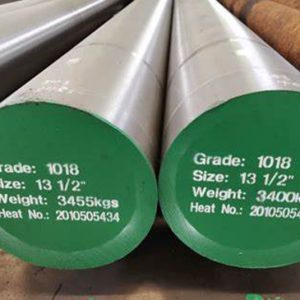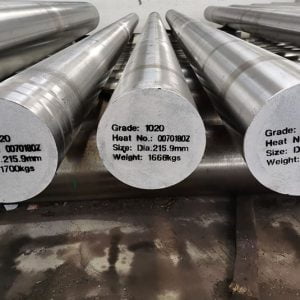Introduction

In the realm of steel manufacturing, the process of drawing steel holds significant importance. Understanding the intricacies of drawn steel manufacturing is crucial for various industries, ranging from construction to automotive. This blog delves into the fundamental aspects of drawn steel, elucidating its production process, applications, and significance in modern engineering.
The Basics of Drawn Steel
Drawn steel, also known as cold drawn steel, undergoes a unique manufacturing process that enhances its mechanical properties and surface finish. This section explores the key steps involved in drawing steel, from raw material selection to the final product.
Advantages of Drawn Steel
- Improved Mechanical Properties: Drawn steel undergoes a cold working process that enhances its mechanical properties, including strength, hardness, and toughness. This makes it ideal for applications requiring high performance and durability.
- Dimensional Accuracy: The drawing process allows for precise control over the dimensions of the steel, ensuring consistency and uniformity in the final product. This level of accuracy is crucial in industries such as automotive and aerospace where tight tolerances are essential.
- Enhanced Surface Finish: Compared to other forms of steel, pull steel exhibits a smoother and more refined surface finish. This not only enhances the aesthetic appeal but also improves functionality by reducing friction and wear in moving parts.
- Cost-Effectiveness: While the initial investment in pull steel production may be higher due to the complexity of the manufacturing process, the resulting material’s superior properties often justify the cost. Its durability and performance can lead to long-term cost savings by minimizing maintenance and replacement expenses.
- Versatility in Processing: Drawn steel can be easily further processed through machining, welding, and surface treatments, allowing for customization according to specific requirements. This versatility expands its potential applications across various industries.
Applications of Drawn Steel
- Aerospace: In the aerospace industry, where precision and reliability are paramount, pull steel finds extensive usage in manufacturing aircraft components such as landing gear, engine parts, and structural elements. Its high strength-to-weight ratio contributes to the overall efficiency and safety of aerospace systems.
- Manufacturing: Drawn steel plays a crucial role in the manufacturing sector, where it is utilized in the production of precision tools, machine parts, and conveyor systems. Its dimensional accuracy and mechanical properties make it indispensable for achieving tight tolerances and maintaining operational efficiency.
- Automotive: Drawn steel is widely employed in the automotive industry for fabricating various components, including chassis parts, suspension systems, and drive shafts. Its strength, durability, and formability contribute to vehicle performance, fuel efficiency, and safety.
- Consumer Goods: From household appliances to consumer electronics, pull steel is ubiquitous in the production of consumer goods. Its versatility allows for the creation of aesthetically pleasing and durable products, ranging from kitchen utensils to electronic enclosures.
- Construction: In the construction sector, pull steel is used in structural applications such as beams, columns, and reinforcement bars. Its high strength and ductility make it an ideal material for supporting heavy loads and withstanding harsh environmental conditions in buildings and infrastructure projects.
Understanding the Drawn Steel Manufacturing Process
- Raw Material Selection: The journey of pull steel begins with the careful selection of raw materials. Typically, low-carbon steel bars or wire rods serve as the primary input for the drawing process. The choice of raw material is critical as it influences the final product’s mechanical properties, surface finish, and overall quality. High-quality raw materials ensure that the pull steel meets stringent performance standards and customer specifications.
- Drawing Process: The hallmark of pull steel production is the drawing process itself. Unlike hot rolling, which involves shaping steel at elevated temperatures, drawing steel occurs at ambient or room temperature. During drawing, the steel is pulled through a series of dies with progressively smaller diameters, exerting tensile forces that elongate and refine the material. This cold working process imparts desirable characteristics such as increased strength, improved surface finish, and enhanced dimensional accuracy.
- Annealing: Following the drawing process, pull steel often undergoes annealing—a heat treatment technique aimed at relieving internal stresses and refining the microstructure. Annealing involves heating the steel to a predetermined temperature and holding it for a specified duration before gradually cooling it. This annealing cycle not only improves the material’s ductility and machinability but also enhances its overall stability and performance.
- Surface Treatment: To further enhance the pull steel’s properties and longevity, various surface treatments may be applied. Common surface treatments include pickling, phosphating, and coating processes. Pickling removes surface impurities and oxides, while phosphating creates a protective phosphate coating to improve corrosion resistance. Additionally, coatings such as zinc or epoxy may be applied to provide additional protection against environmental factors and mechanical wear.
- Final Inspection and Packaging: The journey of drawn steel concludes with rigorous quality control measures and packaging for distribution. Final inspection involves comprehensive testing to ensure that the pull steel meets specified standards for dimensions, mechanical properties, and surface characteristics. Once verified, the steel is carefully packaged to prevent damage during transit and storage, ready to be deployed in various industrial applications.
Drawn Steel in Engineering Excellence: Case Studies

Drawing steel unlocks a realm of possibilities in engineering innovation. This section showcases real-world examples where drawn steel has played a pivotal role in achieving remarkable feats of design and functionality.
| Application | Description |
|---|---|
| Automotive Parts | Drawn steel components enhance the structural integrity and performance of automotive systems, contributing to fuel efficiency and safety. |
| Precision Tools | The superior dimensional accuracy and surface finish of pull steel make it an ideal choice for manufacturing precision tools and machine parts. |
| Structural Frames | Drawn steel’s high strength-to-weight ratio makes it a preferred material for constructing durable and lightweight structural frames in buildings and bridges. |
Conclusion
The allure of drawn steel lies in its ability to combine strength, precision, and versatility, making it a preferred choice in modern engineering endeavors. By unraveling the intricacies of drawn steel manufacturing and exploring its manifold applications, this blog aims to deepen appreciation for this indispensable material in shaping our technological landscape.
Through continuous innovation and refinement, drawn steel continues to push the boundaries of what’s possible, underpinning progress across industries and enriching our everyday lives with its enduring presence.
FAQ
Q:What is the difference between drawn steel and hot-rolled steel?
A:Drawn steel undergoes a cold working process at room temperature, resulting in improved mechanical properties and surface finish, whereas hot-rolled steel is formed at high temperatures, making it less precise but suitable for certain applications.
Q:Is drawn steel more expensive than other forms of steel?
A:While the manufacturing process of drawn steel may incur higher initial costs, its superior properties often justify the investment, especially in applications where precision and performance are paramount.
Q:Can drawn steel be recycled?
A:Yes, drawn steel is highly recyclable. Its scrap can be efficiently reprocessed and reused in various manufacturing processes, contributing to sustainability initiatives.










